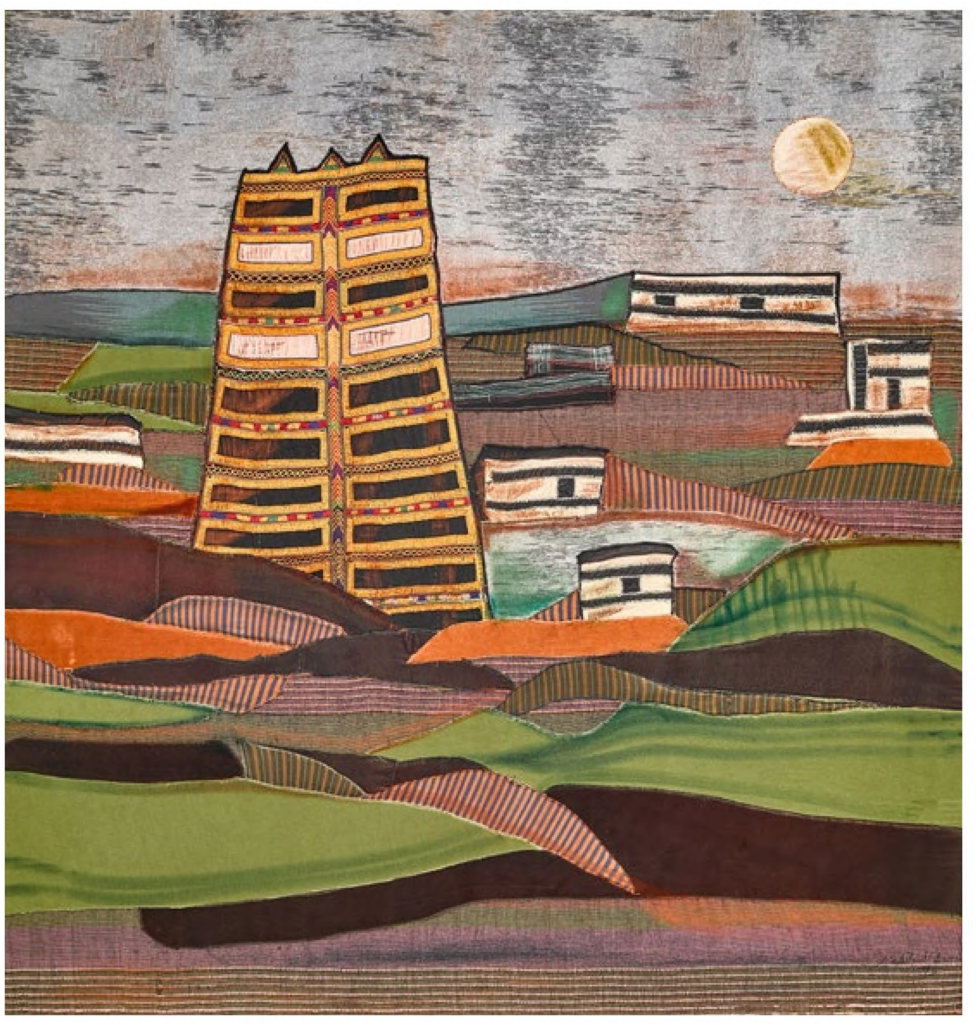NABILA AL BASSAM
Born Mumbai, India, lives and works in Al Khobar, Saudi Arabia
Selected Works
1993–99

Nabila Al Bassam works with mixed-media and traditional textile making processes to produce multilayered collages on canvas that explore materiality and structure. Trained as an educator and teacher at the American University of Beirut in the late 1960s, she then studied silk-screen printing and drawing in the United States. After returning to Saudi Arabia in 1979, Al Bassam spent years traveling across the Kingdom, conducting extensive research and interviews with craftswomen involved in the production of traditional textiles. Drawing on her deep knowledge of the histories and techniques of fabrics and weaving, Al Bassam uses cut-outs of handmade textiles along with embroidered and antique fabrics, beads, and other decorative elements collected from her travels to form works that celebrate traditional crafts. In 1979 she founded the Arab Heritage Gallery in Al Khobar to serve as an exhibition space for artists as well as an archive and holding for modern and contemporary works inspired by these traditional crafts.
The works on view convey Al Bassam’s distinctive interpretation of Saudi Arabian landscapes. Cut and woven fragments of textiles are layered horizontally to create backgrounds giving the illusion of foreground and depth. In two works each with the title Buildings of Southern Arabia she uses the characteristic front embroidery from traditional dresses of Aseer to collage and shape the traditional houses of the Aseer and Najd regions of Saudi Arabia within a landscape setting. The iconic indigenous palm trees of the desert punctuate these vistas, as do variations of texture. Vibrant colors and paint applied over the collage of fabrics create emphasis—windows, outlines, figures, shadow, and light. The Lighthouse of Saudi (1999) and The Lighthouse of the South (1999) show stacked, compact structures suggesting a town or city, sometimes highlighted with beads. The first shows the painted forms of female figures who live within, while an additional untitled work draws on Al Sadu weaving techniques. For Al Bassam, her compositions and use of fabric are both an assertion of the legacy of ancestral art and an homage to the women who have typically produced these works.
